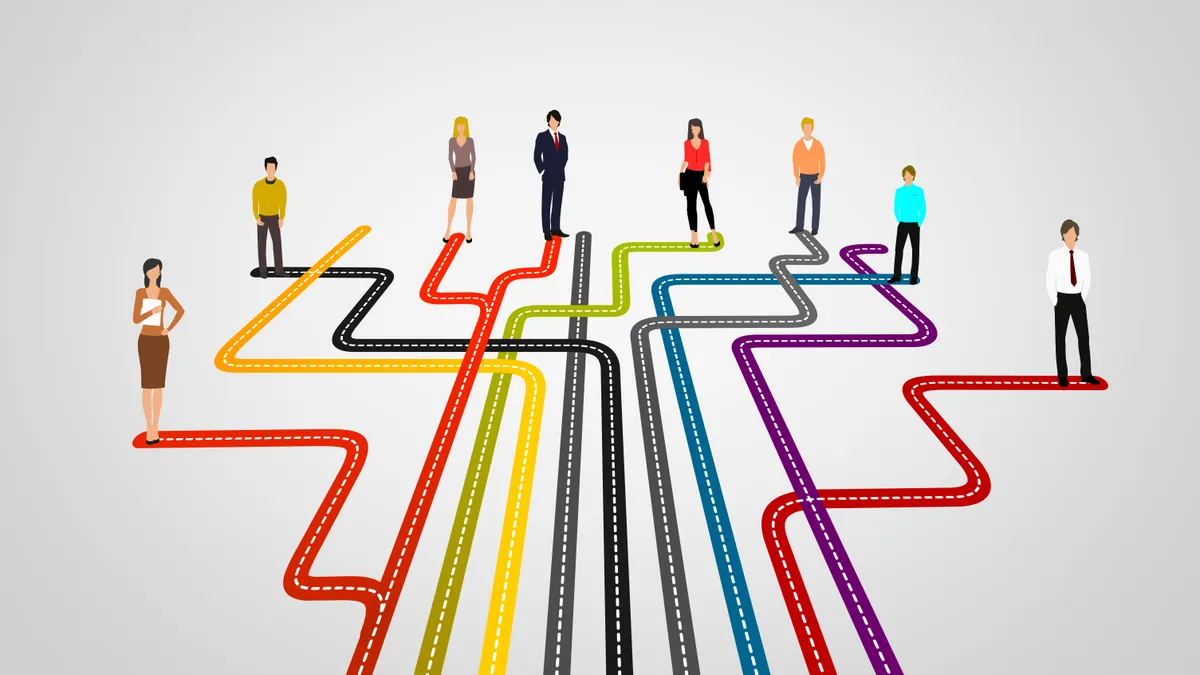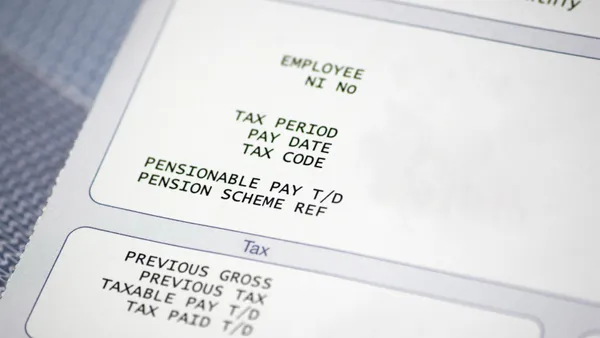Someone once said, “Education is not preparation for life. Education is life itself.” For me, that quote is a billboard for the evolution learning and development and corporate culture has gone through over the last ten years. Ten years ago, we were only just transitioning from training teams to the learning and development departments. A decade ago, we were in an awkward phase where technology was often more limiting than it was liberating.
Nowadays, the pace of change feels like a strange collision between keeping up and catapulting forward.
The workforce is made up of distracted, overwhelmed, digitally agile, overachievers who not only want but expect a continuous stream of personalized learning and development experiences. On the other side of those demands is the L&D Team. Whether that team is made up of two, five, or fifty people - there’s a point at which we all look at each other and say, “is it just me or is it getting really difficult to keep up with keeping up.”
What’s most interesting about this particular moment in time, is that while companies are doing their best to evolve … technology is out there outpacing everyone. Instead of being held back by our systems, we’re being propelled forward with an explosion of possibilities.
Buzzworthy but Different? Adaptive vs. Artificial
In the HR and L&D space, Adaptive Learning and Artificial Intelligence have taken the top billing as our latest buzzwords.
Last I checked there were over 355 million results for “artificial learning in L&D.” A quick search on HRDive.com produces 17 pages of articles. Adaptive Learning isn’t far behind. While all of the innovation and education surrounding AI and adaptive learning is impressive and exciting - the result is mostly a lot of confusion.
In the sea of possibilities, we’re all scrambling to chart the “right” course and navigate new waters that are - at least for learning and development - still murky at best.
Which explains why we’re still asking genuine questions like, “how do I evolve the way we execute our company’s ‘culture of learning?’ “Which new approach is going to support our strategy?” “Where does adaptive learning end and AI begin? Are they the same or different?” “Where does predictive and personalized learning fit in?” And, my favorite, “Are we even prepared to adopt the next evolution of technology?”
To answer these questions, we first have to wade through the world of marketing speak and speculation and establish some common language.
What is Artificial Intelligence?
Artificial intelligence. Walk any conference floor, and it becomes generalized to the point where once again, we’re left wondering what it means not to mention how it can benefit an organization.
Ben Eubanks, principal of Lighthouse Research and author of the book, Artificial Intelligence for HR: Use AI to Support and Develop a Successful Workforce, outlines AI best:
The term ‘artificial intelligence’ is actually an overarching category with several more targeted terms falling under that headline, including:
- Machine Learning
- Natural Language Processing
- Deep Learning
- Neural Networks
“Artificially intelligent systems have to not only analyze activities and predict outcomes - they also need to learn from those predictions over time.”
He also points out that even in our attempt to understand AI, a lack of a highly precise and universally embraced definition of AI is one of the key reasons for the explosive growth in the field.
For the sake of time, we’ll leave the definition of AI here (we highly encourage you to read Ben’s book) so we can look at adaptive learning and AI side-by-side.
What is Adaptive Learning?
Adaptive learning is an approach used to identify or diagnose gaps in skill, competency, and/or knowledge and then offer up moments of learning that can help close those gaps along the career path continuum. For learning to be truly adaptive, content must be personalized. Personalization could be by department, job, job level, a specific skill, or competency to name a few.
Looking back through history you can find all kinds of examples of adaptive learning at work. Think back to a college administration counselor using a syllabus and a one-on-one meeting to establish a jumping-off point to recommend a semester’s worth of classes that align to a degree.
Today, adaptive learning is most commonly thought of as a technology-driven process. Adaptive learning technology consumes an individual’s data (employee profile, assessment scores, test scores, curricula, courses, goals, skills, performance, and more) at a point in time and as the individual engages in more experiences. It uses carefully developed content that’s been intelligently categorized or “tagged” so that the system can, for example, automatically and with little-to-no human intervention connect a skill gap to a curriculum, course, lecture, or supplemental content and serve it up to the correct employee.
It’s important to note that the above scenario is developed and designed by a human. Hopefully, it’s several humans across the HR and L&D functions. It’s also plugged into a software system by humans, and generally, speaking is a large framework containing a fairly rigid set of rules.
To go back to our college counselor example again, imagine a structured but complex and networked syllabus. However, instead of the brain having to do all that processing one thirty-minute meeting at a time, technology with adaptive learning capabilities can do it faster, at scale, and personalize it.
Adaptive Learning Can Be Artificial
Looking back through the lens of AI, adaptive learning technology analyzes activities, predicts outcomes, and automatically serves up personalized content based on human-designed rules.
Which gets us to our big finale: adaptive learning can be artificially intelligent. Adaptive learning becomes artificially intelligent if it analyzes activities, predicts outcomes, serves up personalized content and most importantly learns from those predictions over time.
And this key difference brings us to the million-dollar question. If an organization doesn’t have a structured set of adaptive learning rules designed by humans, for humans then how can a machine learn?
The answer? Master adaptive learning first. Only then can you effectively collaborate with technology to determine how best to turn on AI.
About Matthew Brown
Matthew Brown is the VP of Learning and Brand Success at Schoox. Matthew’s has 15+ years in IT, HR, Learning & Development, and Talent Management, across multiple industries, with a majority of that time being focused on the hospitality and restaurant industry. Matthew brings his unique blend of technical skills to the world of HR and Training, allowing for an innovative approach to the integration of people, processes, and tools. Matthew has led numerous training initiatives, stood up complex HR and IT Enterprise SaaS Solutions and led countless program rollouts. His passion for Learning & Development combined with a unique blend of technical and business expertise allow him to bring a fresh take on the business of People Practices. In his spare time, Matthew enjoys volunteering at several community non-profit organizations and spending time with his family and pets.
About Schoox
Schoox is the only modern, cloud-based learning and talent development platform designed to unlock employee potential and accelerate business results for even the most complex company structures. Founded in 2012, the company’s six core solutions solve a combination of human capital management challenges by combining Learning Engagement, Content Curation, Social Collaboration, Performance Management & Succession, Career Development, and Business Impact into one unified platform. Today, Schoox empowers excellence in learning and talent development for 10 million users across 120 countries in companies like Subway, Kia, Phillips66, Red Lobster, Celebrity Cruises, First Watch, Cheesecake Factory, Frontier Airlines and more. Visit https://www.schoox.com/ to learn more.










